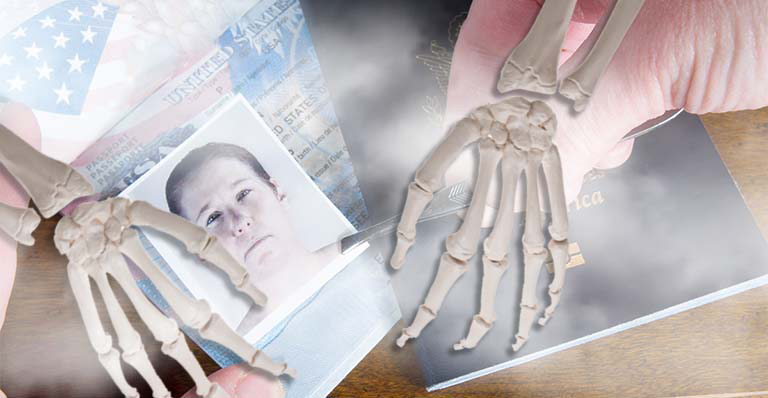This Halloween, Don’t Let Your Citizens Get Tricked: Three Ways Identities Can Be Stolen
Some scares aren’t limited to Halloween. Without proper document security measures, would-be thieves may be dressing up as real people — and stealing more than candy.
Sound scary? It should. In the past year, the US Federal Trade Commission received 1.4 million identity theft complaints. On a macro-scale, it’s estimated by the audit, tax, advisory and risk firm, Crowe, that cases of document fraud siphon a staggering £3,176,073,804,000.00 from the global economy per year. For countless citizens around the globe, identity theft isn’t some abstract boogeyman — it’s a harsh, unfortunate reality.
In this post, we’ll focus on identity document fraud and forgery and the security measures that can be used to prevent them. So much focus is placed on protecting digital information, that schemes related to the alteration or creation of physical documents are not always top of mind.
Boo! Three Scary Document-Based Methods for Stealing Identities
Identity theft and identity fraud are umbrella terms that characterize any crimes in which someone accesses and uses another individual’s personal documents by means of counterfeit or deception. If that definition seems vague, it’s because “identity theft” covers a massive array of scenarios. Here are three major ways that identities are stolen:
- Forging One Document to Access Others
Certain documents, such as birth certificates, are often used as a first step to create or gain access to other sensitive documents or information. If someone is able to forge a birth certificate (a relatively less-secure document), they often can get their hands on a whole host of other data and documentation. - “Frankensteining” Counterfeit IDs
In this method, the forger fabricates an entirely new document, often combining materials stolen from legitimate sources. - Altering of Legitimate Documents
Using this method, a fraudster gains access to an original document and modifies it.
Preventing Document Forgery is Multi-Layered
The security of identity documents has increased more in the last 40 years than in the previous 300. From handwritten papers without so much as an identifying photo to machine-readable documents embedded with highly sophisticated visual and digital data, the technological leaps have been immense. However, it’s still a challenge for issuing authorities to stay ahead of fraudsters, as counterfeit technology has been evolving almost as quickly.
Security features embedded into modern identity documents range from standard to highly specialized.
Core features are those outlined by ICAO 9303, including numismatic line work patterns to give a 3D appearance, microtext and deliberate design mistakes. Beyond these standard features (95% of which are shared by all passports), lies true differentiation and security. Personalized holograms, laser watermarks, advanced polymers and secure hinges are some of the advances available from specialized vendors to set your authority’s documents apart. (Read this comprehensive glossary of document security features.)
As alluded to previously in this post, the biggest risk with physical documents relates to their origin. Once issued, a genuine document replete with multiple layers of security is a tremendous asset, for both the correct identity holder and someone who wants to impersonate them. Therefore, the critical challenge becomes proving the identity of the individual at the point they apply for their physical document. With demand growing for more convenient and online ways of initiating these types of requests, in addition to embedding security within the documents themselves, a robust civil registration system that strongly links the individual to their core identity credential is just as necessary.
Key takeaway: The more features applied to an identity document, the more secure it is. It’s the combination of technologies and methodologies that makes them secure.
Interested in providing your citizens with tamper-proof, irrefutable IDs? Read the executive brief Assessing the Real Risk in the Identity Journey >>
